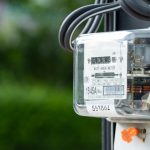Self-watering planters are making waves among plant enthusiasts as a solution to the age-old challenge of ensuring plants receive the right amount of watering. For consumers wanting to embrace gardening without the commitment of daily care or those seeking to maximize their time and effort, these innovative containers provide an attractive option. Offering convenience, cost-effectiveness, and improved plant health, self-watering planters might just be the perfect investment for your green space.
The Mechanism Behind Self-Watering Planters
At the core of a self-watering planter is a simple concept: a reservoir system that supplies water to the plant’s roots as needed. These planters consist of two main parts: the planting container, where the plant resides, and a water reservoir at the base. The reservoir can vary significantly in size depending on the planter’s design and the plant’s water needs. A wick or capillary system typically connects the two, allowing water to travel upward from the reservoir to the plant’s roots through capillary action.
Typically, these planters also include a water gauge, an indicator letting you know when it’s time to refill the reservoir. This mechanism ensures plants receive consistent moisture without the risk of over or under-watering.
Benefits of Self-Watering Planters
Self-watering planters come with an array of benefits that make them a worthy consideration for any home gardener or plant lover.
- Consistent Hydration: One of the primary challenges for plant owners is maintaining a consistent watering schedule. Self-watering planters alleviate this concern by automating the process, allowing plants to take in water as they need it.
- Water Conservation: By delivering water directly to the plant roots, these planters reduce water wastage. Traditional watering methods often result in excess water running off the surface or evaporating, whereas self-watering systems economize usage and are an environmentally conscious choice.
- Reduced Maintenance: With a self-watering planter, the requirement for daily watering is eliminated. Depending on the plant and growth environment, users may only need to refill the reservoir every few weeks, freeing up time for other pursuits.
- Improved Plant Health: Another significant advantage of self-watering planters is the health benefits for your plants. By ensuring consistent moisture levels, plant roots grow more robust and healthy, promoting lush, vigorous growth.
- Prevention of Root Rot: Overwatering is a known culprit behind root rot and other plant ailments. These planters prevent such issues by controlling moisture at the root level, enabling the plant to draw only what it needs.
Types of Self-Watering Planters
There are various types of self-watering planters available, each suited for different plants and spaces.
- Wick Systems: The most basic system uses a wick to transfer water from the reservoir to the soil. Simple and efficient, it works best for small to medium-sized plants.
- Sub-irrigation Systems: Sub-irrigation systems incorporate a false bottom or platform within the planter, allowing soil contact with water through a connecting channel. These systems are ideal for larger pots and outdoor gardens.
- Soil Moisture Sensors: Advanced planters might include a moisture sensor that automatically waters plants based on the moisture level in the soil. These are often part of high-end smart gardening systems.
- Passive Hydroponics: Moving beyond soil, some planters use a combination of inert growing media and water reservoirs, making them well-suited for hydroponic gardening enthusiasts.
Choosing the Right Self-Watering Planter
When selecting a self-watering planter, several essential factors should be considered.
- Plant Type: Ensure that the planter’s size and system are suitable for the type of plant you intend to grow. Some plants, like succulents, have very different watering needs than tropical species.
- Location: Indoor and outdoor plants may require different types of planters. Consider the environmental conditions where the plant will reside. Outdoor planters may need to withstand the elements, while indoor options might focus more on design aesthetics.
- Size and Capacity: Determine how much space is available for your planter and how much soil and water it needs to accommodate your chosen plants. Larger planters with bigger reservoirs will need less frequent refilling.
- Material: Self-watering planters come in various materials, from plastic and ceramic to metals. Each material has its own pros and cons regarding durability, weight, and aesthetics.
- Budget: The price for self-watering planters can vary widely, from affordable to premium options. Determine your budget and balance it with the planter’s features and your needs.
Cost Savings and Environmental Impact
Self-watering planters provide cost-saving benefits that may not be immediately apparent. By using water more efficiently, they help to lower your water bill, particularly in areas with a high cost of water. Reducing overwatering diminishes fertilizer runoff, which is both economically beneficial and environmentally friendly.
The environmental impact doesn’t stop there. Conserving water is crucial in times of growing scarcity and climate change. Healthier and stronger plants contribute positively to local ecosystems, promoting biodiversity and aiding carbon sequestration.
DIY Self-Watering Planters
For the budget-conscious, do-it-yourself solutions can provide a cost-effective alternative to store-bought planters. A simple version can be made using common household items such as a water bottle, which can be repurposed as a reservoir. By inserting a wick made from fabric, you create a basic self-watering system that allows your plants to draw up moisture as needed.
Innovations and Smart Gardening
As technology advances, smart gardening solutions are becoming more and more common, making the process even more seamless. Modern self-watering planters often include smart features such as sensors that connect to your smartphone, allowing for remote monitoring and management. These features can provide alerts, track water levels, and adjust watering schedules automatically, enabling precision in plant care without hands-on intervention.
Using Self-Watering Planters for Various Plant Types
While self-watering planters can accommodate a wide range of plants, some types particularly benefit from this system. Herbs, for instance, thrive with consistent moisture levels. Vegetables, especially those grown in confined spaces like balconies or small patios, can be particularly productive in self-watering containers.
However, it’s crucial to note that not all plants are suited for these systems. Plants that prefer drier conditions, like succulents or cacti, may not benefit as much from consistent moisture provided by self-watering systems, unless specifically designed for them.
Self-watering planters are a wise investment for plant enthusiasts looking to reduce the effort required in plant maintenance while ensuring lush growth. With numerous options catering to different needs, both in terms of functionality and aesthetics, they offer substantial value for the savvy consumer. Whether you have a busy schedule, want to conserve resources, or simply lack a green thumb, self-watering planters can be a practical solution to explore. As technology continues to get better, we can only expect even more innovations in this space, meaning even more effective and convenient plant care options for everyone.



